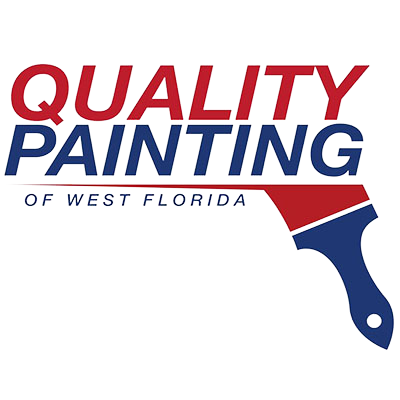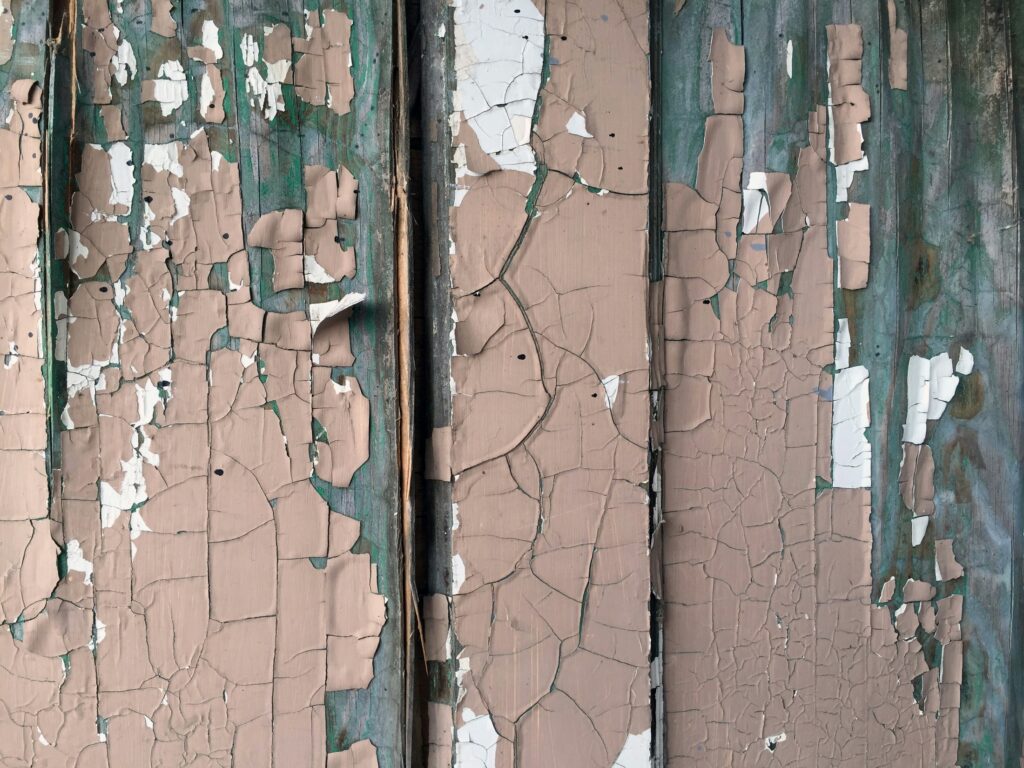Practical Solutions for Troubleshooting Paint Problems
Painting your home—whether it’s the interior or exterior—is one of the most impactful ways to refresh its appearance and increase its value. But what happens when your paint job doesn’t look right? Blisters, peeling, mildew, cracking, and discoloration can all turn a simple project into a frustrating mess.
Understanding how to troubleshoot common paint problems is essential to preserving both the beauty and longevity of your walls, trim, and siding. In this guide, we’ll delve into the root causes of the most common paint issues, explore how to address them, and provide guidance on when to tackle DIY projects—and when to call a professional.
Troubleshooting Paint Problems: Blistering, Cracking & Mildew
Blistering: When Paint Bubbles Up
What It Looks Like: Raised bubbles or blisters on the surface of the paint, which may burst and peel.
Causes:
-
Painting over a damp or dirty surface
-
Painting in direct sunlight or on a hot surface
-
Trapped moisture beneath the paint
-
Use of incompatible paint types (e.g., oil over latex)
Solutions:
-
Scrape and sand the blistered area
-
Allow the surface to dry thoroughly
-
Repaint using a high-quality primer and paint
-
Avoid painting in direct sunlight or during humid conditions
Prevention:
-
Clean surfaces thoroughly before painting
-
Use breathable paints for exterior jobs
-
Ensure proper ventilation indoors
Cracking and Flaking: Signs of Aging or Poor Preparation
What It Looks Like: Hairline cracks that deepen over time, eventually causing the paint to flake off.
Causes:
-
Inadequate surface prep (e.g., not priming or cleaning)
-
Over-thinning the paint
-
Applying paint too thinly or too thickly
-
Natural aging of paint
Solutions:
-
Remove all loose or flaking paint
-
Sand the area smooth
-
Apply a high-quality primer
-
Repaint with the appropriate paint type for the surface
Prevention:
-
Don’t skip prep—clean, sand, and prime every time
-
Follow the manufacturer’s instructions for thinning and drying times
-
Use flexible, high-quality paint with good adhesion
Mildew: The Hidden Threat Behind Paint
What It Looks Like: Discolored spots (often black or gray) on paint surfaces, especially in damp areas like bathrooms, basements, or shaded exteriors.
Causes:
-
Moisture and poor ventilation
-
Painting over existing mildew
-
Use of paint not formulated for high-moisture environments
Solutions:
-
Wear protective gear and scrub the affected area with a mixture of water and bleach
-
Let it dry completely
-
Repaint using mold-resistant primers and paints
Prevention:
-
Improve ventilation in damp areas
-
Use paints with built-in mildew resistance
-
Address water intrusion or leaks promptly
Discoloration and Stains: When Color Doesn’t Stay True
What It Looks Like: Yellowing, fading, or stain bleed-through from underneath the paint.
Causes:
-
Water leaks behind walls
-
Nicotine or grease buildup
-
Tannins from wood bleeding through
-
Low-quality paint or poor UV resistance
Solutions:
-
Identify and fix the source of the stain (e.g., plumbing leaks)
-
Use stain-blocking primers
-
Repaint with high-quality, UV-resistant paint
Prevention:
-
Always use primer on stained or porous surfaces
-
Consider washable paints for kitchens, bathrooms, and kids’ rooms
-
Use a sealer on wood before painting
Peeling: When Paint Just Won’t Stick
What It Looks Like: Large sections of paint separating from the wall or surface in sheets.
Causes:
-
Painting over dirt, oil, or old glossy surfaces
-
Poor adhesion due to lack of primer
-
Excessive moisture beneath the surface
-
Using the wrong type of paint
Solutions:
-
Scrape away peeling paint and sand the area
-
Clean the surface thoroughly
-
Apply primer before repainting
-
Fix underlying moisture issues (e.g., leaky pipes, gutters)
Prevention:
-
Always test adhesion if unsure
-
Use primers when switching paint types (e.g., latex over oil).
-
Paint only on dry, clean surfaces
DIY Fixes vs. When to Call a Professional
There’s a lot you can do yourself when it comes to troubleshooting paint issues. However, knowing when to call a pro can save you time, money, and frustration in the long run.
DIY-Friendly Fixes:
-
Small blistering or peeling spots
-
Minor cracks or touch-ups
-
Surface cleaning and repainting in isolated areas
-
Repainting furniture or small rooms
When to Call a Professional:
-
Widespread mildew or mold issues (especially in humid climates like Florida)
-
Large areas of peeling, cracking, or discoloration
-
Suspected water damage behind walls or ceilings
-
Historic homes with lead-based paint or textured surfaces
-
Major exterior repainting jobs or multi-story homes
Professional painters can assess underlying issues, recommend the right products, and ensure your paint job lasts for years—often with a warranty.
Preventative Maintenance Schedule: Keeping Paint Problems Away
A quality paint job isn’t just about the day it’s applied—it’s about how well you maintain it afterward. Here’s a general preventative maintenance schedule to keep paint in peak condition.
Monthly:
-
Inspect high-moisture areas like bathrooms and kitchens for mildew or discoloration
-
Check exterior siding for early signs of peeling or bubbling
Every 6 Months:
-
Clean exterior surfaces to remove dirt, pollen, and mildew
-
Re-caulk windows and trim if gaps or cracking appear
-
Check indoor baseboards, ceilings, and trim for scuffs or peeling
Annually:
-
Touch up high-traffic interior areas like hallways and kids’ rooms
-
Repaint surfaces exposed to heavy wear (e.g., outdoor railings, decks)
Every 5–7 Years:
-
Repaint exterior surfaces depending on sun exposure, paint quality, and surface material
-
Interior walls may last longer with proper care, but consider repainting rooms with heavy use every 5 years
Choosing the Right Paint for Long-Term Success
Even with the best techniques, the quality of your materials matters. Invest in paints that are:
-
Washable and scrubbable for interiors
-
UV-resistant and mold-resistant for exteriors
-
Low-VOC or zero-VOC for healthier indoor air quality
-
Formulated for your specific surface (drywall, wood, stucco, concrete)
Florida-Specific Paint Challenges
Living in a climate like Florida’s brings unique challenges for homeowners. High humidity, intense UV exposure, and salty coastal air can wreak havoc on even the best paint jobs.
Tips for Florida Homes:
-
Use exterior paints rated for high UV resistance
-
Select mold- and mildew-resistant paints, especially for shaded exteriors
-
Pressure wash annually to remove algae and salt buildup
-
Inspect stucco and siding for hairline cracks that allow moisture intrusion
The Importance of Surface Preparation
It’s often said that 80% of a good paint job is in the preparation. This couldn’t be more accurate.
Proper prep includes:
-
Cleaning with degreaser or TSP
-
Repairing cracks, holes, or dents
-
Priming bare or porous surfaces
-
Sanding glossy surfaces for better adhesion
Skipping any of these steps can significantly reduce the lifespan of your paint—and its appearance.
Don’t Let Small Issues Turn into Big Repairs
Paint problems don’t always mean your whole project is ruined—but ignoring the signs can lead to expensive fixes later. Whether you’re seeing bubbles, stains, or fading color, understanding the root cause is the first step toward fixing it correctly.
When in doubt, hiring a professional can protect your investment and ensure your home looks great for years to come. A reliable painter doesn’t just apply paint—they diagnose issues, prep surfaces properly, and use the best products for the job.
Contact Quality Painting for Expert Help
If your home is showing signs of peeling paint, mildew, or other damage—or you simply want a professional, long-lasting paint job—contact the experts at Quality Painting of Florida. Our licensed team proudly serves homeowners across the Tampa Bay area with honest advice, expert prep, and stunning results that last.
Whether it’s a full exterior repaint, an interior refresh, or fixing stubborn paint problems, we’re here to do the job right. Request your free estimate today and let us restore beauty, protection, and peace of mind to your home.

